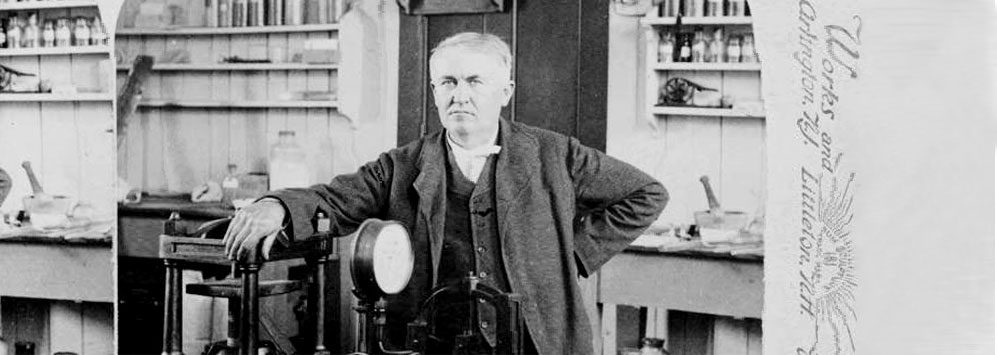Who is Edison?
Thomas Alva Edison
(February 11, 1847 – October 18, 1931) was an American inventor, scientist, and businessman who developed many devices that greatly influenced life around the world, including the phonograph, the motion picture camera, and a long-lasting, practical electric light bulb. Dubbed "The Wizard of Menlo Park" (now Edison, New Jersey) by a newspaper reporter, he was one of the first inventors to apply the principles of mass production and large teamwork to the process of invention, and therefore is often credited with the creation of the first industrial research laboratory.
Edison is considered one of the most prolific inventors in history, holding 1,093 U.S. patents in his name, as well as many patents in the United Kingdom, France, and Germany.
Early Life
Thomas Edison was born in Milan, Ohio, and grew up in Port Huron, Michigan. He was the seventh and last child of Samuel Ogden Edison, Jr. (1804–1896, born in Marshalltown, Nova Scotia, Canada) and Nancy Matthews Elliott (1810–1871).His father had to escape from Canada because he took part in the unsuccessful Mackenzie Rebellion of 1837. Edison considered himself to be of Dutch ancestry. In school, the young Edison's mind often wandered, and his teacher, the Reverend Engle, was overheard calling him "addled". This ended Edison's three months of official schooling. Edison recalled later, "My mother was the making of me. She was so true, so sure of me; and I felt I had something to live for, someone I must not disappoint." His mother homeschooled him.Much of his education came from reading R.G. Parker's School of Natural Philosophy and The Cooper Union. Edison developed hearing problems at an early age. The cause of his deafness has been attributed to a bout of scarlet fever during childhood and recurring untreated middle ear infections. Around the middle of his career Edison attributed the hearing impairment to being struck on the ears by a train conductor when his chemical laboratory in a boxcar caught fire and he was thrown off the train in Smiths Creek, Michigan, along with his apparatus and chemicals. In his later years he modified the story to say the injury occurred when the conductor, in helping him onto a moving train, lifted him by the ears. Edison's family was forced to move to Port Huron, Michigan, when the railroad bypassed Milan in 1854, but his life there was bittersweet. He sold candy and newspapers on trains running from Port Huron to Detroit, and he sold vegetables to supplement his income. This began Edison's long streak of entrepreneurial ventures as he discovered his talents as a businessman. These talents eventually led him to found 14 companies, including General Electric, which is still in existence and is one of the largest publicly traded companies in the world
Marriage
On December 25, 1871, Edison married 16-year-old Mary Stilwell, whom he had met two months earlier as she was an employee at one of his shops. They had three children:
• Marion Estelle Edison (1873–1965), nicknamed "Dot"
• Thomas Alva Edison, Jr. (1876–1935), nicknamed "Dash"
• William Leslie Edison (1878–1937) Inventor, graduate of the Sheffield Scientific School at Yale, 1900
Mary Edison died on August 9, 1884, possibly from a brain tumor.
On February 24, 1886, at the age of thirty nine, Edison married 20-year-old Mina Miller in Akron, Ohio. She was the daughter of inventor Lewis Miller, co-founder of the Chautauqua Institution and a benefactor of Methodist charities. They also had three children:
• Madeleine Edison (1888–1979), who married John Eyre Sloane.
• Charles Edison (1890–1969), who took over the company upon his father's death and who later was elected Governor of New Jersey. He also took charge of his father's experimental laboratories in West Orange.
• Theodore Edison (1898–1992), (MIT Physics 1923), had over 80 patents to his credit.
Mina outlived Thomas Edison, dying on August 24, 1947.
Beginning his career
Photograph of Edison with his phonograph, taken by Mathew Brady in 1877 Thomas Edison began his career as an inventor in Newark, New Jersey, with the automatic repeater and his other improved telegraphic devices, but the invention which first gained him fame was the phonograph in 1877. This accomplishment was so unexpected by the public at large as to appear almost magical. Edison became known as "The Wizard of Menlo Park," New Jersey, where he lived. His first phonograph recorded on tinfoil around a grooved cylinder and had poor sound quality. The tinfoil recordings could be replayed only a few times. In the 1880s, a redesigned model using wax-coated cardboard cylinders was produced by Alexander Graham Bell, Chichester Bell, and Charles Tainter. This was one reason that Thomas Edison continued work on his own "Perfected Phonograph."
Menlo Park
Edison's major innovation was the first industrial research lab, which was built in Menlo Park, New Jersey. It was built with the funds from the sale of Edison's quadruplex telegraph. After his demonstration of the telegraph, Edison was not sure that his original plan to sell it for $4,000 to $5,000 was right, so he asked Western Union to make a bid. He was surprised to hear them offer $10,000,which he gratefully accepted. The quadruplex telegraph was Edison's first big financial success, and Menlo Park became the first institution set up with the specific purpose of producing constant technological innovation and improvement. Edison was legally attributed with most of the inventions produced there, though many employees carried out research and development work under his direction. His staff was generally told to carry out his directions in conducting research, and he drove them hard to produce results. The large research group included engineers and other workers.
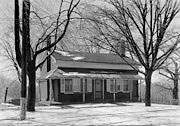
Edison’un doğumyeri
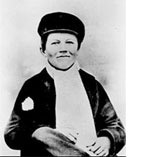
Çocukluk dönemi
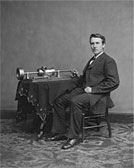
Edison ve ilk icat ettiği fonograflardan biri; 1877-1878 civarları.
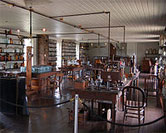
Edison'un Menlo Park Laboratuarı











